Our Easter Table
Rustic olive oil cake with hard boiled eggs and salame + lamb chops with roasted potatoes + pastiera, the classic Neapolitan Easter pie.
Our geometra, Gabriele, who is managing renovations at our Montalcino house, wished us a hearty Happy Easter on Wednesday, his entusiasmo suggesting that their office would be closed for the long holiday weekend.
It was a reminder that Easter is an important holiday in Italy, marked by family gatherings and long-standing food traditions. In Italy, Easter Monday is also a holiday, often celebrated by taking a trip to the countryside. There’s an Italian saying, “Pasqua con i tuoi, pasquetta con chi vuoi,” which essentially means that Easter Sunday is to be spent with family, while on Easter Monday, you are free to make whatever plans you want.
Here in the U.S., even though Easter is more low-key and Easter Monday is a regular workday, we hold true to our Easter meal traditions. Here’s what’s on our Easter table.
Breakfast
Easter morning begins with olive oil cake, accompanied by hard-boiled eggs and Corallina salame. Breakfast in Rome is usually sweet, so the addition of savory eggs and salame is an Easter exception.
Easter Lunch
For Romans, there is no question about what to serve for Easter lunch. It is, without exception, abbacchio alla romana con patate al forno, Roman-style lamb with oven-roasted potatoes. Not just any lamb, though. Abbacchio is suckling lamb, also called milk-fed lamb, a young lamb that has only been nourished with its mother’s milk.
Our friend, Frank Fariello, a fellow Roman expat and author of the Memorie di Angelina newsletter, shared his recipe for abbacchio alla romana this week. Like Frank, we can’t find true abbacchio here in Minneapolis either, but we make due quite well with a rack of lamb ribs and oven-roasted potatoes.
Dessert
There’s no lack of sweet treats to end the Easter meal.
La Colomba is a traditional sweetbread, the Easter version of panettone, the Italian Christmas staple. Colomba means “dove” in Italian, and fittingly, this cake is baked in dove-shaped paper molds and adorned with candied almonds and decorative sugar. Our local Italian deli, Cossetta’s, makes a Colomba that holds its own with the best artisanal bakeries in Rome.
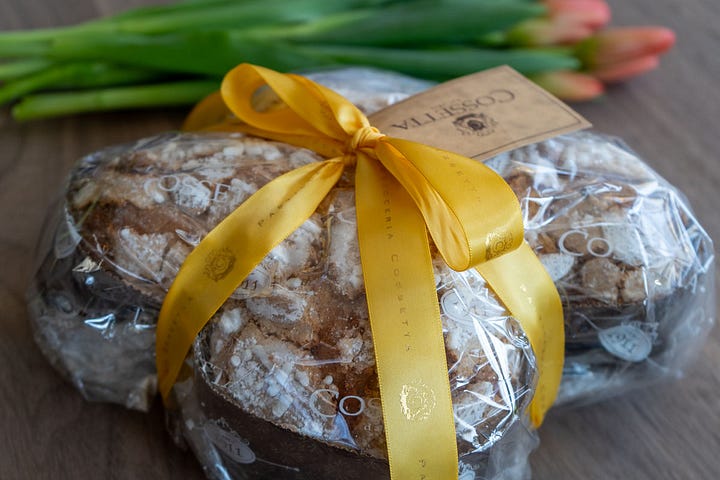
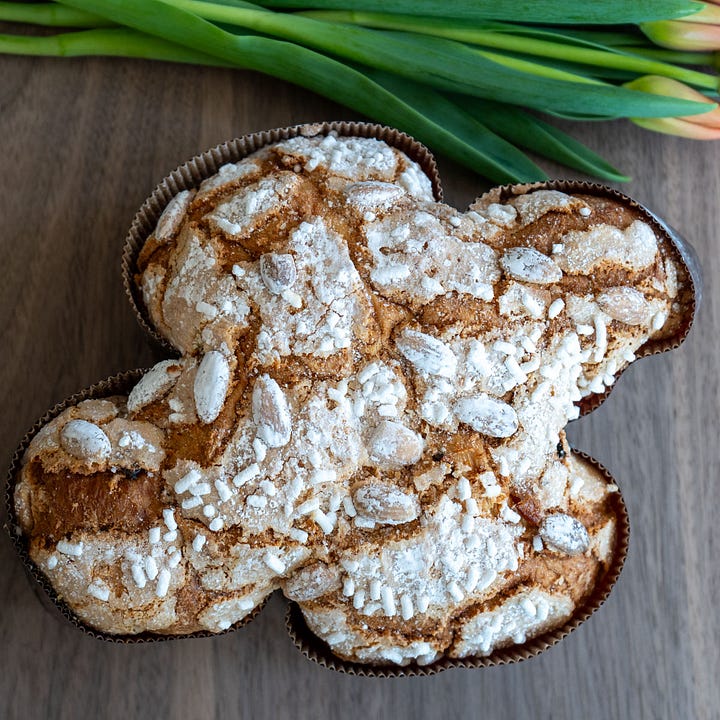
Italy children are gifted uove di pasqua - giant, hollow, chocolate Easter eggs wrapped in colorful foil. At Stefano’s mom’s house, the grandkids crack the eggs open by bonking each other on the head to find the sorpresa, surprise toy, inside.
The chocolate Easter egg tradition is increasingly commercialized, and with no more kids in our household, we’re happy to forego that. Instead, we’ve adopted an Easter dessert from the Neapolitan tradition, the pastiera Napoletana.
Pastiera Napoletana
Made with wheatberries and ricotta and aromatized with bright citrus flavors, this rich and dense cheesecake is originated in Naples, where it is said, “la pastiera non può mancare sulla tavola di Pasqua - the pastiera is never missing from the Easter table.
Our Neapolitan friend Alfonso told us that his mom began baking pastiere several days before Easter, lining them side by side above her kitchen cabinets, where the flavors developed and intensified. The pastiera, Alfonso explained, does not go in the refrigerator.
Since we tackled the recipe and began making pastiera, it’s never missing from our Easter table, either. Despite the difficulties finding quality ricotta - ideally, the pastiera is made with sheep’s milk ricotta, but we must substitute with cow’s milk ricotta or ricotta di bufala - and extra effort to source ingredients such as cooked wheatberries, it’s with the trouble. We look forward to this delicious and unique dessert each Easter.
Click below to learn about the fascinating legends and history behind la pastiera napoletana and to access our go-to recipe.
Gelato!
Stay tuned for next week’s round-up, which is all about gelato. We’ll explain what separates good gelato from the lesser stuff, share tips for spotting and avoiding the tourist traps, and reveal a few of our favorite gelaterias in Rome.





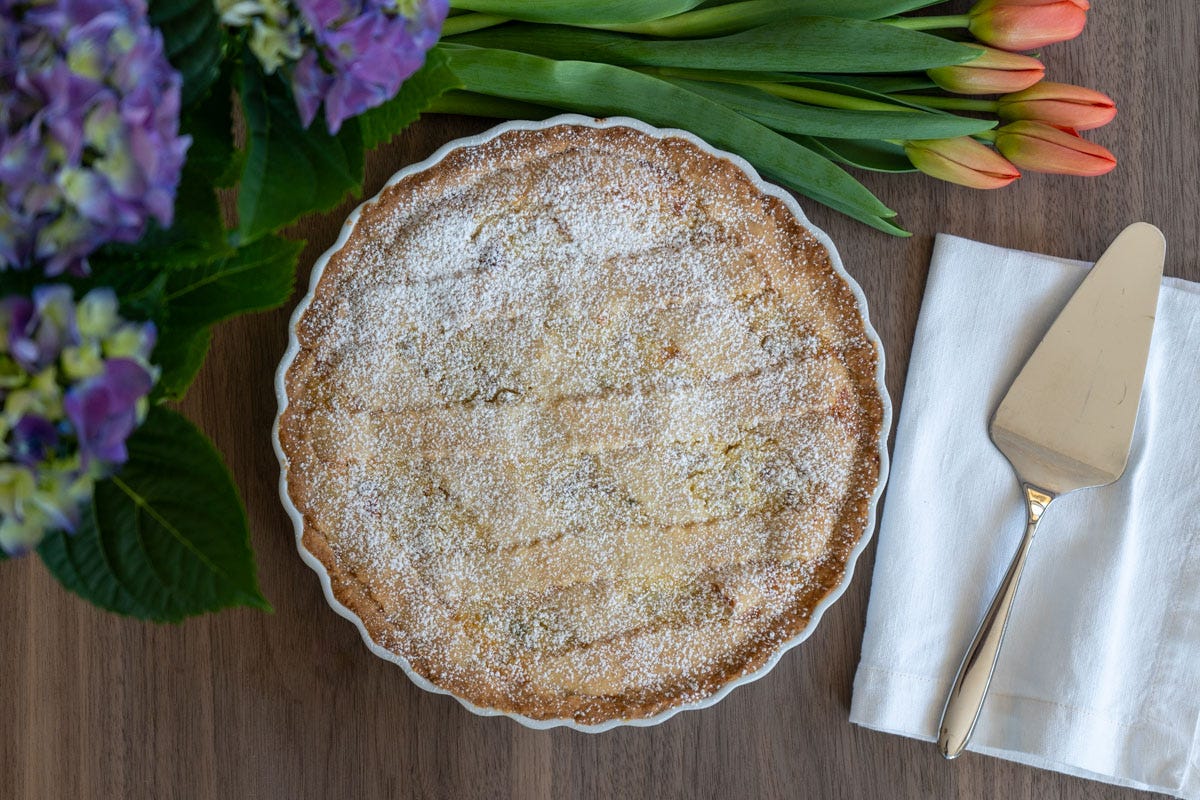
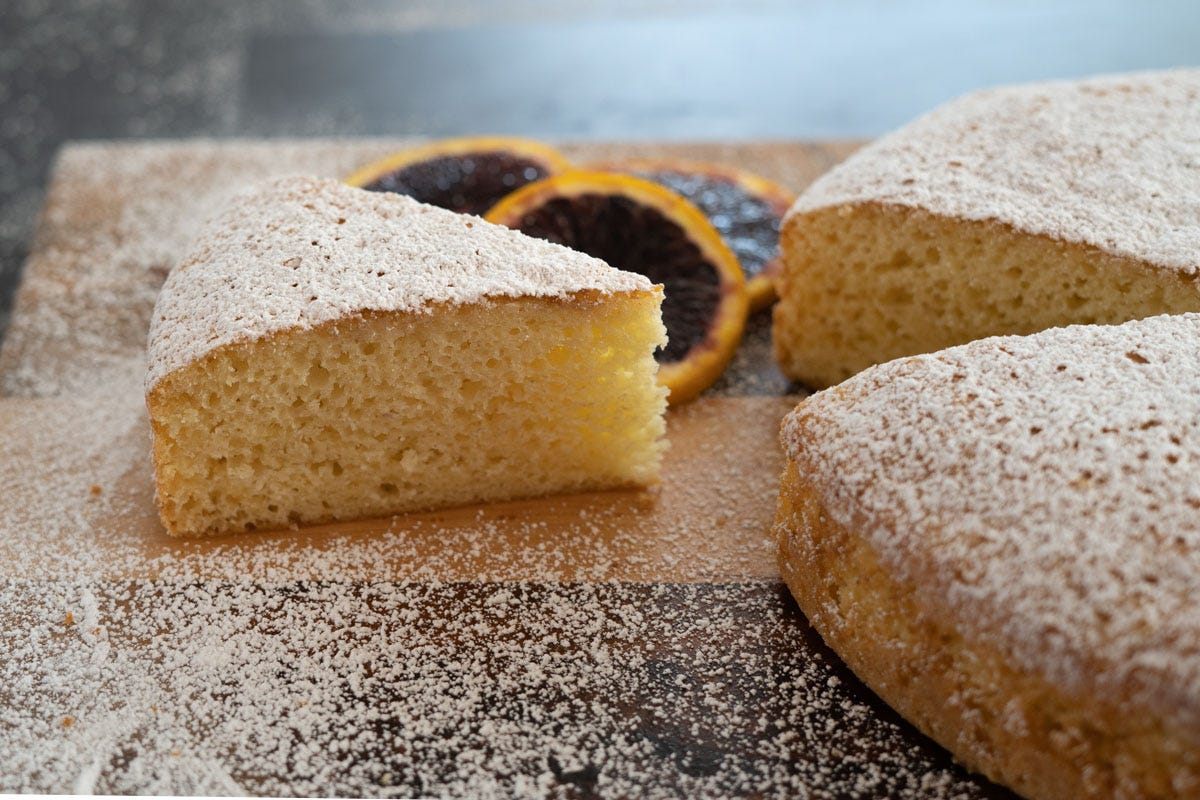
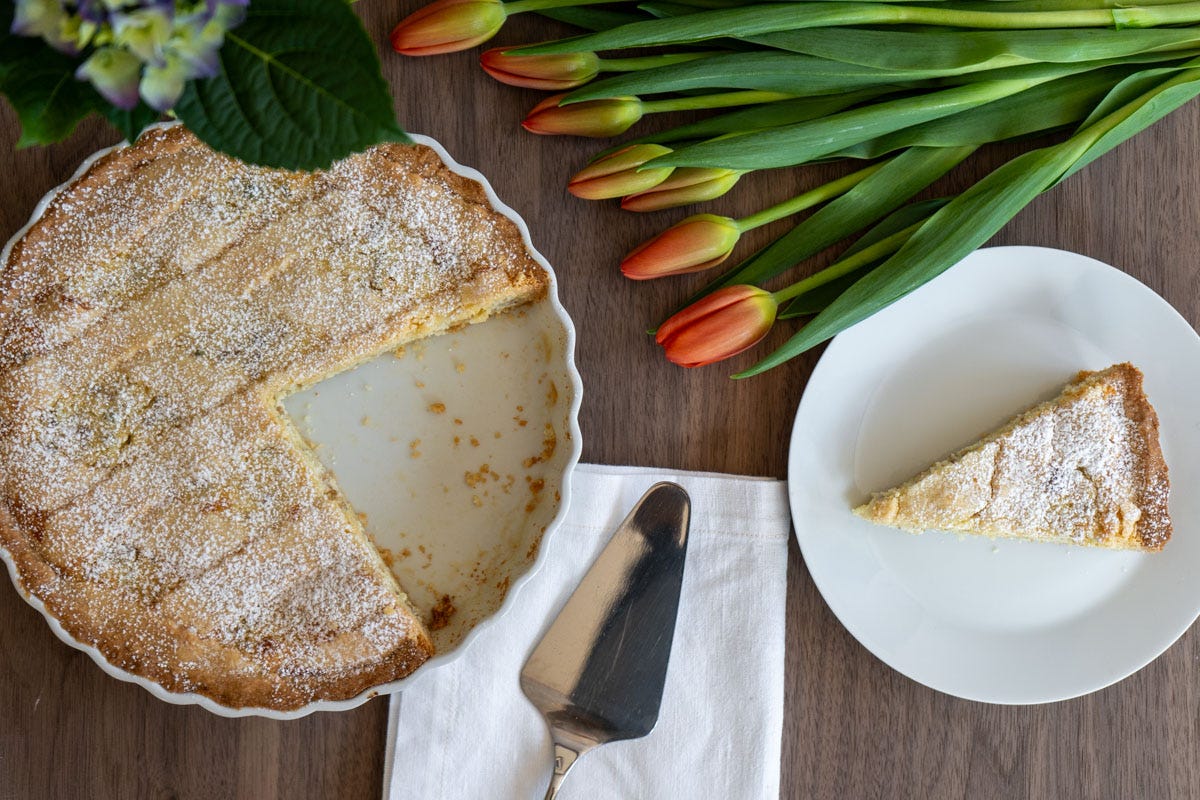
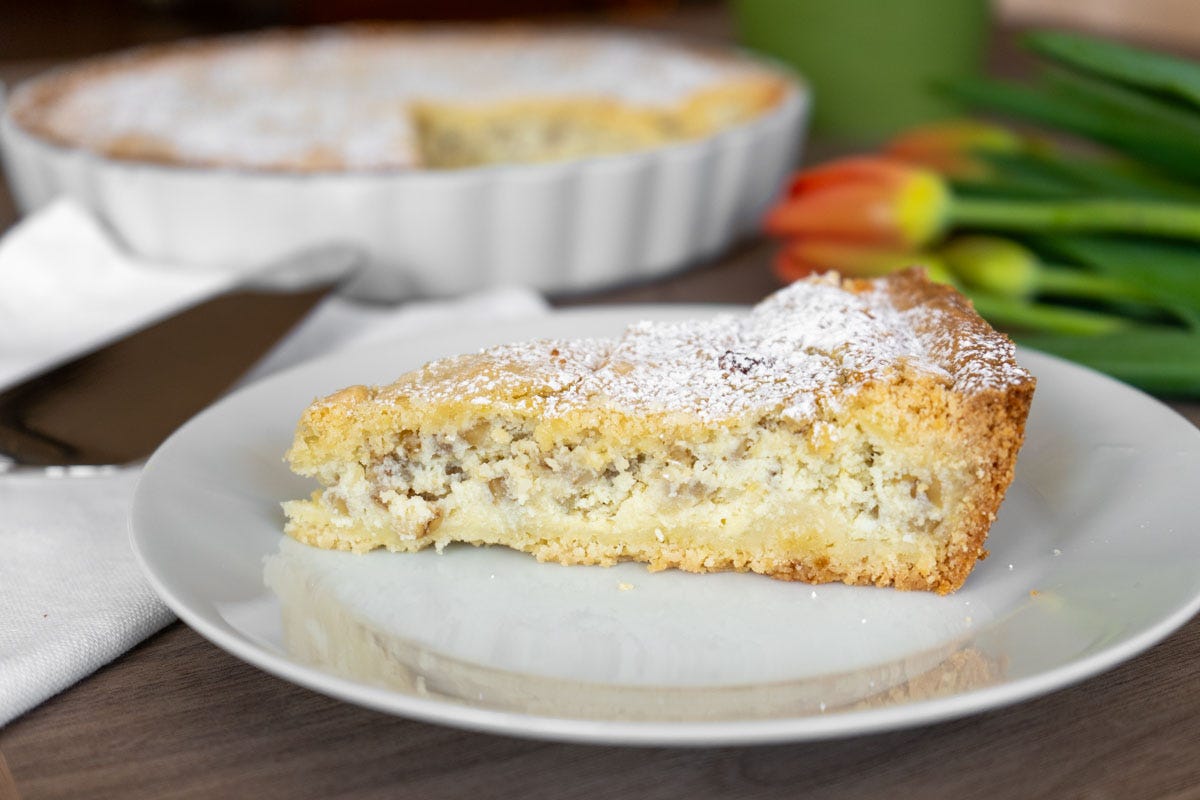

That pastiera looks amazing! Mine is baking in the oven right now. Buona Pasqua!